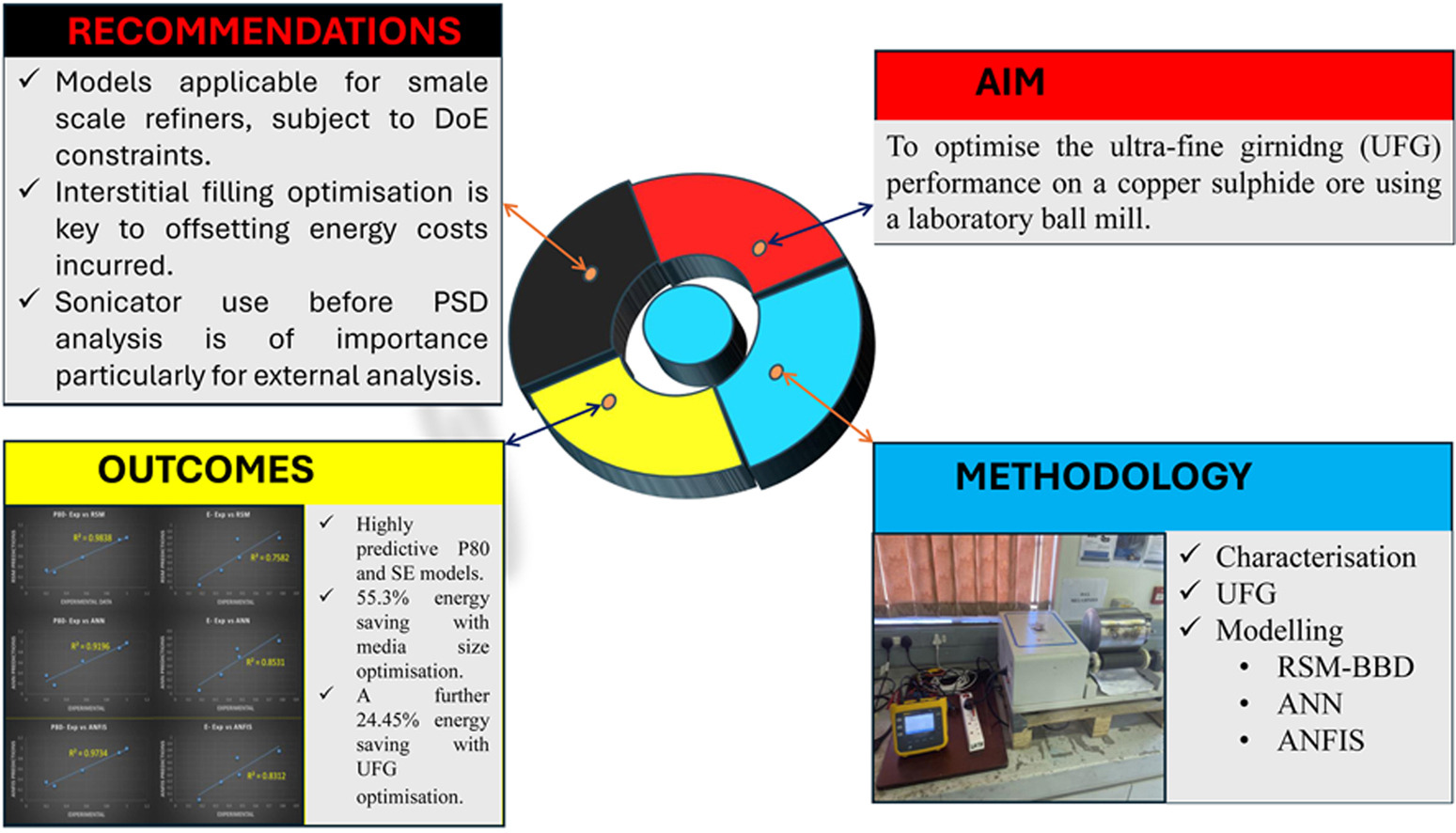• Hybrid modelling was applied for optimization of ultra-fine grinding (UFG) of a low-grade copper sulphide ore.
• Media filling ratio bears more influence on ultra-fine grinding,compared to the rest.
• Shift from coarse to fine grinding media led to a 55.3 % energy saving.
• Optimization of grinding extent led to a further 24.45 % energy cost saving.
• Higher predictive fidelity and robust transferable model development realized through hybrid modelling.
As the demand for base metals continues to increase, the shift to beneficiating low-grade ores and secondary sources has been steadily increasing over the past decades. This study aimed at optimizing the beneficiation of low-grade copper sulphide ores by applying ultra-fine grinding to mechanically activate its mineral grain surfaces. As an energy intense process, this study sought to streamline the manner in which the milling media particle size impacts the operating conditions, for fine-tuning the process milling efficiency (P80), and its specific energy consumption (SE). The intrinsic interaction behaviors of the operating conditions;milling speed,milling time and grinding media filling ratio,were uncovered through a hybrid modelling technique involving the response surface methodology,artificial neural network (ANN) and artificial-neuro-fuzzy-inference-system (ANFIS) approaches. Through this methodology,it was revealed that the baseline process parameter of dependence,to the rest in this study was the media filling ratio (%). At lower media filling ratios, it was noted that basically the milling speed did not bear much influence on the process performance, however, an inverse impact to the process performance was observed with increasing media filling ratio. For milling time, a direct proportionality was observed between it and media filling ratio, and its proportionality constant could be finely tuned as per set conditions. Optimization study led to adoption of the optimum conditions of media filling ratio, milling time and milling speed of 60 %, 1 h and 106 revolutions per minute (RPM) respectively. Upon optimizing the grinding extent to P80 of 20 μm, a 24.45 % SE conservation was realized, basing on the traditional 10 μm of the Activox process. Validation of the hybrid models using a different sulphide ore drew the superiority of the ANFIS model for P80 predictions, and that of ANN for SE predictions. This study addressed the need, particularly of small-scale miners, to effectively conduct mechanical activation without necessarily incurring expenditure on new milling equipment.

